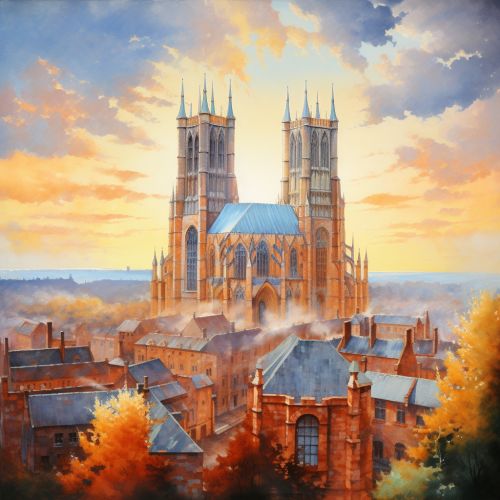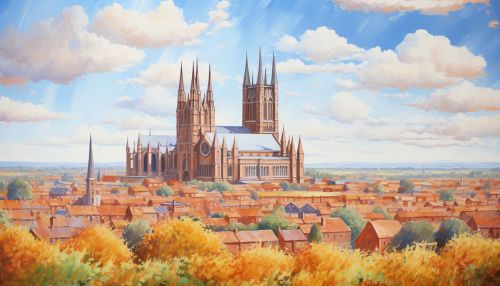Lincoln Cathedral
History
Lincoln Cathedral, also known as the Cathedral Church of the Blessed Virgin Mary of Lincoln, is one of the most prominent historical landmarks in the United Kingdom. The cathedral's construction began in 1072 under the order of William the Conqueror, following the Norman Conquest of England. The cathedral was consecrated in 1092, but suffered extensive damage in an earthquake in 1185. The rebuilding process, which began almost immediately, resulted in the structure that largely stands today. The cathedral was the tallest building in the world for 238 years (1311–1549) until the central spire collapsed.


The cathedral's architecture is primarily in the Gothic style, with the earliest parts of the building reflecting the Norman style. The cathedral is renowned for its intricate stone carvings, including the famous Lincoln Imp, a small stone figure of a devilish creature. The cathedral's library houses a wealth of historical documents, including one of the four surviving copies of the Magna Carta.
Architecture
The architecture of Lincoln Cathedral is a testament to the skill and ingenuity of medieval builders. The cathedral's design is primarily Gothic, characterized by pointed arches, ribbed vaults, and flying buttresses. The cathedral's three towers are its most distinctive features, with the central tower once holding a wooden spire that made the cathedral the tallest building in the world until its collapse in 1549.
The cathedral's interior is equally impressive, with its nave, choir, and transepts showcasing the grandeur of Gothic architecture. The cathedral's stained glass windows, particularly the Dean's Eye and Bishop's Eye, are notable examples of medieval stained glass work.
Features
One of the most famous features of Lincoln Cathedral is the Lincoln Imp, a small stone carving of a devilish creature. According to legend, the imp was turned to stone by an angel after causing chaos in the cathedral. The imp has since become a symbol of the city of Lincoln.
The cathedral's library is another significant feature, housing a wealth of historical documents. Among these is one of the four surviving copies of the Magna Carta, a document that laid the foundation for modern democratic principles.
Conservation and Tourism
Lincoln Cathedral is not only a place of worship, but also a major tourist attraction. The cathedral is maintained by the Dean and Chapter of Lincoln, who oversee its conservation efforts. The cathedral offers guided tours, allowing visitors to explore its rich history and architectural beauty. The cathedral also hosts various events throughout the year, including concerts and exhibitions.
